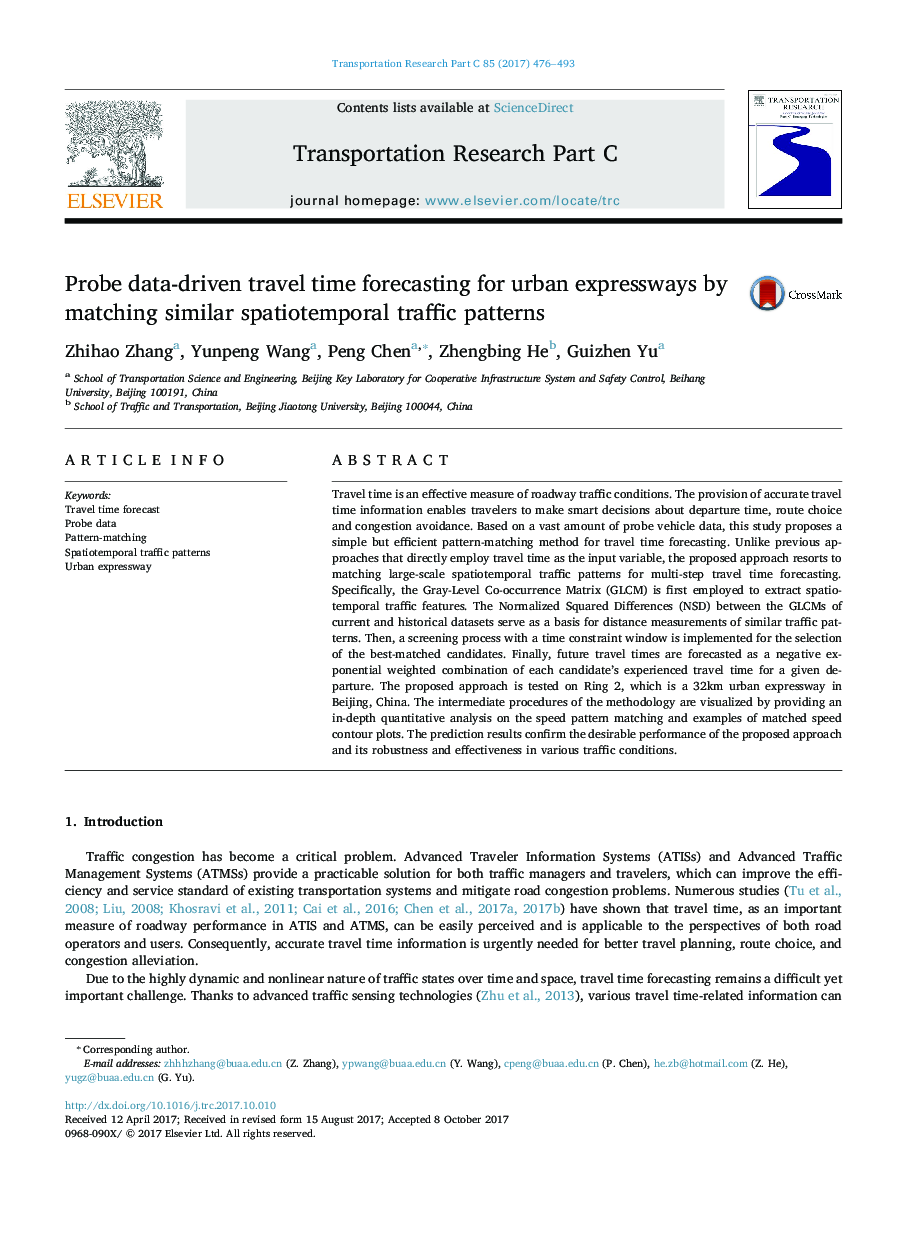| Article ID | Journal | Published Year | Pages | File Type |
|---|---|---|---|---|
| 6936308 | Transportation Research Part C: Emerging Technologies | 2017 | 18 Pages |
Abstract
Travel time is an effective measure of roadway traffic conditions. The provision of accurate travel time information enables travelers to make smart decisions about departure time, route choice and congestion avoidance. Based on a vast amount of probe vehicle data, this study proposes a simple but efficient pattern-matching method for travel time forecasting. Unlike previous approaches that directly employ travel time as the input variable, the proposed approach resorts to matching large-scale spatiotemporal traffic patterns for multi-step travel time forecasting. Specifically, the Gray-Level Co-occurrence Matrix (GLCM) is first employed to extract spatiotemporal traffic features. The Normalized Squared Differences (NSD) between the GLCMs of current and historical datasets serve as a basis for distance measurements of similar traffic patterns. Then, a screening process with a time constraint window is implemented for the selection of the best-matched candidates. Finally, future travel times are forecasted as a negative exponential weighted combination of each candidate's experienced travel time for a given departure. The proposed approach is tested on Ring 2, which is a 32km urban expressway in Beijing, China. The intermediate procedures of the methodology are visualized by providing an in-depth quantitative analysis on the speed pattern matching and examples of matched speed contour plots. The prediction results confirm the desirable performance of the proposed approach and its robustness and effectiveness in various traffic conditions.
Related Topics
Physical Sciences and Engineering
Computer Science
Computer Science Applications
Authors
Zhihao Zhang, Yunpeng Wang, Peng Chen, Zhengbing He, Guizhen Yu,
